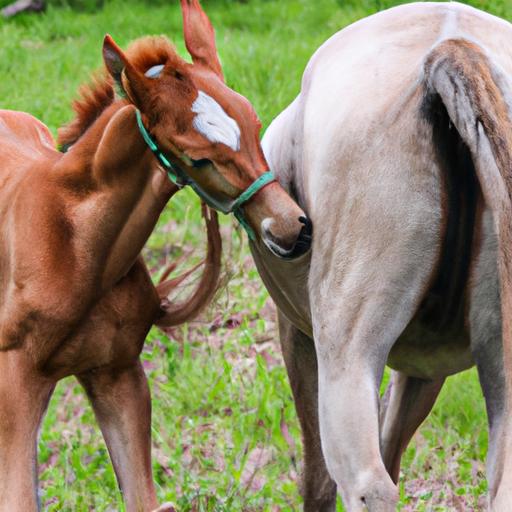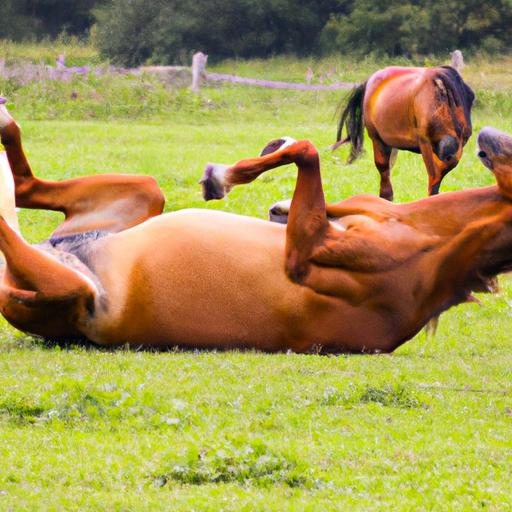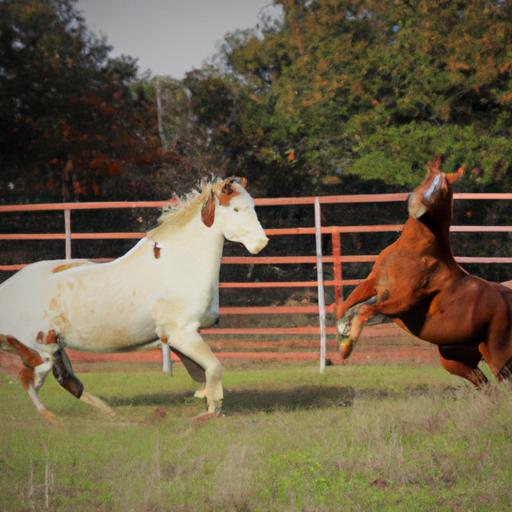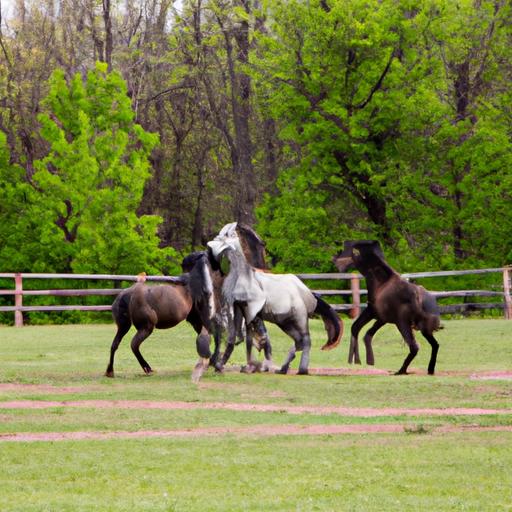Unleash the joy of equine companionship through understanding playful horse behavior. Explore the significance, recognition, and management of this delightful aspect.
Have you ever witnessed a horse frolicking in the pasture, exhibiting a mischievous twinkle in its eye and a spring in its step? That’s playful horse behavior in action! In this article, we will delve into the fascinating world of playful horses, exploring their behavior, significance, and the reasons why it’s crucial to comprehend and embrace their playful nature.
Understanding and Addressing Playful Behavior in Horses
Playful horse behavior refers to a range of lively and exuberant actions horses display, often characterized by spontaneous movements, enthusiastic interactions, and joyful expressions. From playful bucking, rearing, and galloping to engaging in friendly bouts of chasing or nipping, these playful antics are an integral part of a horse’s natural behavior repertoire.
It is essential for horse owners, trainers, and enthusiasts to comprehend the significance of playful behavior in horses. By gaining insight into the motivations behind these actions, we can develop a deeper understanding of equine communication, enhance our bond with these magnificent creatures, and promote their overall well-being.
Unveiling the Purpose: Exploring Key Points
In this article, we will embark on an enlightening journey through the world of playful horse behavior. We will start by defining and providing an overview of what playful behavior encompasses in horses. From there, we will explore the importance of understanding and addressing playful behavior, highlighting the benefits it brings to both horses and their human counterparts.
Additionally, we will shed light on the factors influencing playful horse behavior, including age, gender, environment, and social dynamics. By recognizing and interpreting the various playful behaviors exhibited by horses, we can foster a deeper connection with our equine companions and ensure their needs are met.
Join me as we navigate the realm of playful horse behavior, uncovering the secrets to nurturing and embracing the joys of equine play. Together, we will embark on a remarkable journey, discovering the remarkable world of these spirited creatures and the profound impact their playful nature has on our lives.
Stay tuned for the upcoming sections, where we will delve deeper into the different facets of playful horse behavior, exploring factors that influence it, recognizing its manifestations, and discovering effective strategies to manage and encourage healthy play. Let’s embark on this adventure together, unraveling the mysteries of playful horse behavior!
Understanding Playful Horse Behavior

Definition of Play Behavior in Horses
Play behavior in horses encompasses a wide range of spontaneous, voluntary, and non-functional actions that serve no immediate purpose other than pure enjoyment and social interaction. It includes activities such as running, bucking, rolling, chasing, and engaging in playful bites or nudges. Play behavior is often characterized by exaggerated movements, exuberant displays of energy, and enthusiastic social interactions with other horses or even human companions.
Common Playful Behaviors Exhibited by Horses
Horses exhibit various playful behaviors that showcase their exuberance and zest for life. These can include playful running and galloping, often accompanied by joyful bucking or kicking up their heels. They may engage in friendly chasing games, taking turns as the pursuer or the pursued. Playful nipping, biting, and tugging at each other’s manes or tails are also common forms of equine play. These behaviors serve as a means of communication, bonding, and honing their physical coordination and social skills.
The Significance of Play in Horse Development and Social Dynamics
Playful behavior plays a vital role in the overall development and social dynamics of horses. It aids in the formation of strong social bonds, fosters communication skills, and helps establish hierarchies within their herd. Through play, young foals learn vital skills such as balance, coordination, and speed, preparing them for survival in their natural environment. Playful interactions also provide an outlet for excess energy and help horses maintain physical and mental well-being.
Research and Theories on the Origins of Playful Behavior in Horses
Researchers and equine behaviorists have delved into the origins and purpose of playful behavior in horses, uncovering intriguing theories. Some suggest that play behavior is an evolutionary remnant from their wild ancestors, serving as practice for critical survival skills. Others propose that play allows horses to experience joy and emotional release, enhancing their overall welfare. Ongoing studies continue to deepen our understanding of the underlying motivations and benefits of playful horse behavior.
By comprehending the definition, common behaviors, significance, and origins of playful behavior in horses, we can gain a deeper appreciation for their innate nature and the vital role play serves in their lives. Join me as we journey further into the world of playful horses, exploring the factors that influence their playfulness and unraveling the mysteries behind their playful antics.
Factors Influencing Playful Horse Behavior

Age and Gender Differences in Playful Behavior
Playfulness in horses can vary depending on their age and gender. Younger horses, such as foals and yearlings, tend to exhibit more exuberant and frequent playful behaviors. These playful antics serve as a form of learning, helping them develop coordination, strength, and social skills. As horses mature, their playful behavior may decrease, but it remains an integral part of their natural behavior.
Gender also plays a role in the manifestation of playful behavior. Stallions and geldings often engage in more vigorous play, displaying behaviors such as rough chasing and mock fighting. Mares, on the other hand, may exhibit more subtle play behaviors, such as nibbling or playfully nipping at each other. Understanding these gender differences allows us to appreciate the unique ways in which horses express their playfulness.
Environmental and Social Factors Affecting Playfulness
The environment in which a horse lives and interacts significantly influences their playfulness. Horses in spacious and stimulating environments, such as pastures with varied terrain and objects for exploration, are more likely to engage in playful behaviors. A lack of environmental enrichment can lead to boredom and a decrease in playful interactions.
Social dynamics also impact a horse’s playfulness. Horses that have regular opportunities for social interaction and companionship tend to exhibit more play behaviors. Being part of a herd allows horses to engage in social play, establishing social bonds, and developing their social skills.
Relationship between Play and Horse’s Overall Well-being
Playful behavior is not only a source of joy for horses but also contributes to their overall well-being. Play allows horses to release excess energy, reducing the risk of boredom and frustration. It helps maintain their physical fitness, improves coordination and balance, and aids in the development of social skills.
Moreover, play provides horses with mental stimulation, promoting cognitive abilities and problem-solving skills. It enhances their emotional well-being by reducing stress and promoting a positive state of mind. Recognizing the importance of play in a horse’s life allows us to prioritize their happiness and ensure a fulfilling and enriched existence.
Role of Training and Interactions with Humans in Shaping Playful Behavior
The way we interact and train horses can significantly influence their playful behavior. Positive and respectful training methods that encourage playfulness can foster a strong bond between horse and human. By incorporating playful activities and games into training sessions, we can make learning enjoyable for horses, promoting their engagement and willingness to participate.
Furthermore, our interactions with horses should respect their natural play instincts. Allowing horses to engage in spontaneous play during turnout or incorporating playful elements into groundwork and riding can create a harmonious partnership based on mutual trust and enjoyment.
Understanding the various factors that influence playful horse behavior enables us to create an environment that nurtures their natural inclinations and supports their overall well-being. By considering age and gender differences, providing a stimulating environment, recognizing the importance of play for their well-being, and incorporating playful elements into training, we can truly embrace the joyful essence of our equine companions.
Recognizing and Interpreting Playful Horse Behavior

Playful horse behavior is a fascinating aspect of equine interaction, but it’s important to be able to recognize and interpret these behaviors accurately. By understanding the body language, motivations, and significance of playful actions, we can deepen our bond with our equine partners and respond appropriately to their needs.
Identifying Playful Behaviors through Body Language and Expressions
Horses communicate through their body language, and play behavior is no exception. By observing their movements and expressions, we can identify when a horse is engaging in playful behavior. Look for signs such as exaggerated movements, relaxed ears, bright eyes, and a relaxed yet energetic posture. Playful horses often display a sense of lightness and joy in their movements, showcasing their enthusiasm for play.
Differentiating Play Behavior from Aggressive or Problem Behavior
Sometimes, it can be challenging to distinguish between playful behavior and behaviors that may indicate aggression or problems. It is crucial to understand the subtle nuances that differentiate them. Aggressive behavior typically involves intent to harm, while play behavior is generally non-threatening and lacks aggression. Look for contextual cues, such as whether the behavior is reciprocated by other horses or if it occurs during specific play sessions.
Understanding the Motivation behind Specific Playful Actions
Each playful action serves a purpose in a horse’s social and developmental context. Understanding the motivation behind specific playful actions can provide valuable insights into a horse’s desires and needs. For example, playful chasing and nipping may serve as a means of establishing social hierarchies or simply as a way to release excess energy. By understanding these motivations, we can better meet the horse’s needs and support their overall well-being.
The Importance of Observing and Responding to Play in Horses
Observation is key when it comes to recognizing and responding to playful behavior in horses. By actively observing our equine companions, we can gain a deeper understanding of their individual preferences and play styles. Responding appropriately to their play signals, such as joining in or providing safe play opportunities, can strengthen the bond between horse and human. Furthermore, acknowledging and facilitating play can contribute to the horse’s mental and physical stimulation, promoting their overall happiness and contentment.
Understanding and interpreting playful horse behavior is a valuable skill for any horse owner or enthusiast. By recognizing the body language, differentiating play from aggression, understanding motivations, and responding appropriately, we can foster a harmonious and enriching relationship with our equine friends. In the following sections, we will explore techniques for managing and encouraging healthy play, ensuring both the horse’s well-being and our own enjoyment. So, let’s dive deeper into the realm of playful horse behavior and unlock the secrets to nurturing and embracing the joys of equine play!
Managing Playful Horse Behavior
Creating a Safe and Stimulating Environment for Play
When it comes to managing playful horse behavior, creating an environment that promotes safe and engaging play is paramount. Ensure that the pasture or turnout area is free from hazards such as sharp objects or uneven terrain, minimizing the risk of injury. Providing ample space for horses to move freely and interact with their surroundings encourages their natural play instincts.
Additionally, offering stimulating elements within the environment can enhance the play experience for horses. Incorporate toys, such as large balls or hanging objects, that horses can interact with and explore. These enrichments not only encourage play but also provide mental stimulation, preventing boredom and the development of undesirable behaviors.
Encouraging Appropriate Play Behavior through Structured Activities
While horses engage in spontaneous play, structured activities can also be used to encourage appropriate play behavior. Incorporate regular play sessions into your horse’s routine, dedicating specific time for interactive play. Engage in activities such as longeing or ground play, allowing horses to express their playful energy in a controlled and constructive manner.
Introducing playful interactions with other horses can also be beneficial. Pairing compatible equine companions and allowing supervised play sessions can foster social bonding and the development of appropriate play behavior. However, always monitor the interactions closely to ensure they remain safe and respectful.
Training Techniques to Redirect Excessive or Unwanted Playfulness
While play behavior is natural and healthy, excessive or unwanted playfulness may require redirection. Implementing training techniques can help redirect excessive play energy into appropriate channels. For example, teaching horses specific cues or commands that indicate playtime versus work time can help establish boundaries and manage their exuberance.
Consistency and positive reinforcement are key when redirecting unwanted behavior. Rewarding desired behaviors and providing alternative outlets for play, such as designated play areas or toys, can help channel their energy effectively.
Balancing Playtime with Other Aspects of Horse Care and Training
While encouraging and managing play behavior is important, it is crucial to strike a balance between playtime and other aspects of horse care and training. Ensure that horses receive adequate exercise, nutrition, and rest to maintain their overall well-being. Incorporate play sessions as part of a holistic approach to horse management, alongside regular training, grooming, and veterinary care.
By finding the right balance, you can cultivate a harmonious relationship with your horse, allowing them to enjoy the benefits of play while still addressing their other needs. Remember, a well-rounded approach to horse care and training encompasses all aspects of their physical and mental well-being.
In the upcoming sections, we will explore ways to recognize and interpret playful horse behavior, as well as the significance of play in their development and social dynamics. Let’s continue this journey, unraveling the mysteries of the equine world!


